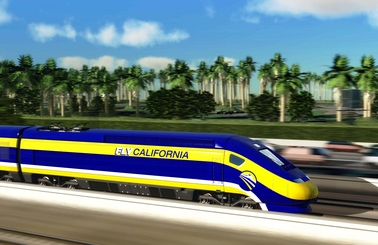Construction of California’s 768-mile high-speed rail system is scheduled to begin next year. It is expected to provide a feasible alternative transportation and is prognosticated to be a success. This is the result of research conducted by Mikhail Chester, Arizona State University engineer, and Arpad Horvath, University of California, Berkeley, engineer.
 A study co-authored by an Arizona State University engineer says California's ambitious plan for a high-speed rail system can become a sustainable and environment-friendly transportation alternative. Photo courtesy of the California High-Speed Rail Authority
A study co-authored by an Arizona State University engineer says California's ambitious plan for a high-speed rail system can become a sustainable and environment-friendly transportation alternative. Photo courtesy of the California High-Speed Rail Authority
The California government’s authorities allotted $7.9 billion for the high-speed rail venture that will connect San Diego, Los Angeles, California and Sacramento through trains that travel at a maximum speed of 220 mph. Following a comparative study of future sustainability of high-speed rail with that of alternative means of transport such as airplanes and automobiles, Chester and Horvath concluded that with respect to power use and greenhouse gas emissions, a well-tuned high-speed rail system supported by top-notch trains powered by greener electricity would be a better bet, even allowing for improvement in automobiles and airplanes.
Chester informed that 30 to 50 years are required before the environmental benefits of the new rail system could be fully reaped. To evaluate long-term feasibility, the engineers performed comprehensive life-cycle analyses of environmental repercussions of all modes of transport. Complete environmental expenses involved in extracting, manufacturing and supplying the materials required to build vehicles, roads, tracks, stations, and other vital parts of the different transportation systems were considered. The researchers took into account various probabilities such as varying degrees of ridership and renewable energy use when calculating quantity of harmful emissions and their consequences on human health. Use of smaller and more energy-efficient trains have been looked at.
Horvath and Chester stated that policy-makers and authorities have to consider various significant factors such as changes in travel time, productivity, congestion, safety and urban development opportunities in optimizing the high-speed rail system.
Source: https://hsr.ca.gov/